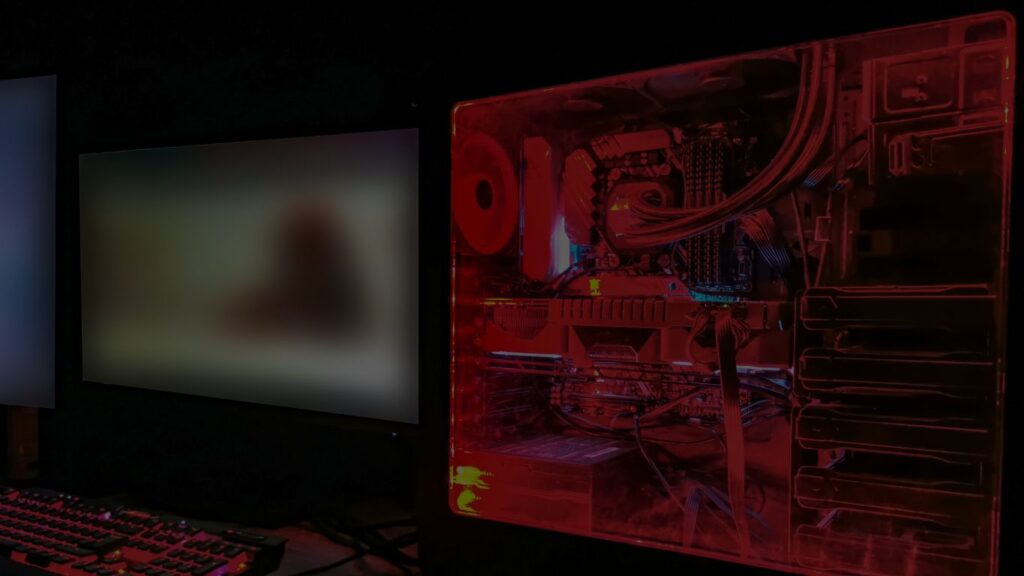Modern games demand more from your PC than ever before. From visually stunning open-world titles to fast-paced multiplayer shooters, your system needs to be optimized to deliver smooth, immersive experiences. If you’ve invested in high-end hardware but still struggle with performance, it might be time to fine-tune your setup.
In this article, we will check how to optimize your PC for gaming—covering everything from maximizing your monitor’s refresh rate to adjusting graphics settings and ensuring your hardware is fully utilized.
1. Understanding Monitor Refresh Rates and Why They Matter
A monitor’s refresh rate determines how often it updates the image per second. Standard displays operate at 60Hz, meaning the screen refreshes 60 times every second. However, gaming monitors with refresh rates of 120Hz, 144Hz, or even 240Hz can offer significantly smoother visuals.
Benefits of High Refresh Rates:
- Smoother motion: Especially noticeable in fast-paced games where rapid mouse movements and quick camera pans are common.
- Reduced input lag: A higher refresh rate reduces the time between your actions and what you see on the screen.
- Minimized tearing: While refresh rates are separate from in-game frame rates (FPS), a monitor capable of high refresh rates can display more frames, reducing screen tearing and stuttering.
2. Variable Refresh Rate (VRR) Technologies
Modern gaming monitors often support Variable Refresh Rate (VRR) technologies, which sync the display’s refresh rate with the GPU’s output. This eliminates screen tearing and provides a more fluid gaming experience. Popular implementations include:
- FreeSync (AMD)
- G-SYNC (NVIDIA)
However, VRR effectiveness still depends on your hardware’s ability to generate high frame rates consistently. If your GPU struggles to hit high FPS, you may not fully experience the benefits of a high-refresh-rate monitor.
3. Adjusting Your Monitor’s Refresh Rate
To take advantage of your monitor’s capabilities:
- Windows Settings:
- Go to Settings > System > Display > Advanced display settings.
- Under Display adapter properties, select the Monitor tab and choose the highest available refresh rate from the dropdown menu.
- Graphics Card Control Panels:
- NVIDIA Control Panel: Right-click the desktop, choose NVIDIA Control Panel > Change resolution, and select the refresh rate.
- AMD Radeon Settings: Right-click the desktop, open AMD Radeon Settings > Display, and adjust the refresh rate.
4. Optimize In-Game Settings
Even with powerful hardware, game settings can impact performance significantly. Here are key settings to adjust:
- Resolution: Lowering from native (e.g., 1080p to 900p) can increase FPS at the cost of some visual clarity.
- Graphics Quality: Reduce shadows, reflections, and texture details for higher frame rates.
- Anti-Aliasing: Disable or lower settings to free up GPU resources.
- Draw Distance: Reduce to lessen GPU load.
- Effects: Turn off motion blur, lens flares, and other post-processing effects to gain smoother performance.
5. Keep Your Drivers Updated
Outdated graphics drivers can cause performance bottlenecks or compatibility issues. Always download the latest drivers from your GPU manufacturer’s website to ensure optimal performance.
6. Manage Background Applications and Startup Programs
Non-essential apps running in the background consume valuable system resources. Use Task Manager (Ctrl + Shift + Esc) to:
- End unnecessary background processes.
- Disable non-critical startup programs under the Startup tab.
7. Enable Game Mode
Windows offers a built-in Game Mode that prioritizes system resources for gaming:
- Go to Settings > Gaming > Game Mode and toggle it on. This mode helps reduce background activity and enhances performance during gaming sessions.
8. Optimize Hardware Components
- GPU (Graphics Card): A crucial component for gaming. Consider overclocking using safe increments via tools like MSI Afterburner (with caution).
- RAM: At least 16GB is recommended for modern gaming. More may help with multitasking or streaming.
- SSD: Install games on an SSD for faster load times and reduced stuttering.
- CPU: A multi-core processor ensures that your system can handle complex game logic and background tasks efficiently.
9. Improve Network Performance for Online Gaming
- Wired Connection: Use Ethernet to reduce latency.
- Router Settings: Enable Quality of Service (QoS) to prioritize gaming traffic.
- Bandwidth Management: Pause downloads and streaming during gaming to ensure maximum bandwidth.
10. Monitor Performance and Adjust
Use built-in FPS counters or third-party benchmarking tools to monitor:
- Frame rates (FPS)
- GPU and CPU temperatures
- Network latency
Adjust settings as needed to find the balance between visuals and smooth gameplay.
Conclusion
Optimizing your PC for gaming goes beyond hardware upgrades. It involves a combination of system settings, driver updates, and thoughtful configuration of your graphics, monitor, and background applications. By following these steps, you can transform your gaming experience—achieving smoother gameplay, faster load times, and an immersive experience that matches the potential of your hardware.






![How To Log Out From TrueCaller App [iPhone & Android]](https://www.techrounder.com/wp-content/uploads/2022/05/Log-Out-From-TrueCaller-App-450x253.jpeg)